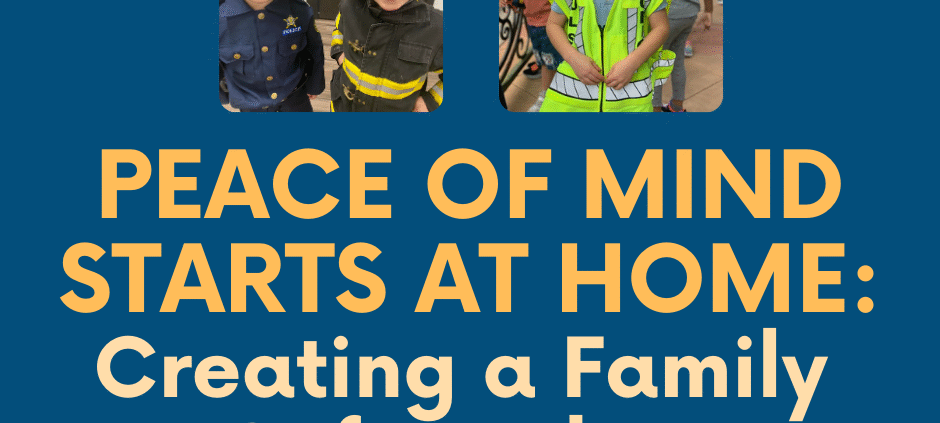Pace of Mind Starts at Home: Creating a Family Safety Plan
Emergencies can happen when we least expect them—but having a plan in place can help your family stay calm, stay safe, and stay connected. At Imagine Early Education and Childcare, we prioritize safety in all that we do, and we want to empower families to feel confident and prepared at home too. Whether it’s a natural disaster, power outage, fire, or other unexpected event, a simple, well-practiced plan can make all the difference.
Here’s how to create a safety plan that fits your family’s needs and gives everyone peace of mind, especially your children.
- Talk About Safety in a Calm and Age-Appropriate Way
Young children don’t need all the scary details—but they do need to know what to do and who to turn to if something feels wrong. Use simple language and reassure them that having a plan helps everyone stay safe.
Tip: Turn safety talks into a game or story to keep things engaging and not overwhelming.
- Identify Emergency Contacts
Make sure every family member knows how to reach key emergency contacts, such as:
- Parents and caregivers
- Grandparents or close relatives
- A trusted neighbor
- Emergency services (911)
Tip: Create a contact card or print out a list to keep in backpacks and post on the fridge.
- Choose a Safe Meeting Place
Pick two meeting spots:
- One near your home: In case of a house fire, a tree or mailbox down the street.
- One outside your neighborhood: In case you can’t return home, such as a relative’s house or a local shelter.
Practice makes perfect—role play a few scenarios so your child becomes familiar with where to go.
- Practice “What-If” Scenarios
Fire drills, storm safety, and evacuation plans should be practiced like any other skill. Keep the mood light, but repeat the routine regularly.
Tip: Use fun checklists, songs, or flashlights to keep little ones engaged while learning.
- Pack a Family Emergency Kit
Every household should have a basic emergency kit that includes:
- Bottled water and non-perishable snacks
- Flashlights and batteries
- First aid supplies
- Blankets and extra clothing
- Important documents (in a waterproof folder)
- Comfort items for children (like a favorite stuffed animal or book)
Let your child help pack their own small safety bag—it gives them a sense of control and security.
- Stay Informed and Connected
Sign up for local emergency alerts and keep your phone charged when severe weather is expected. Make sure your child’s school or childcare provider has your most current emergency contact information on file.
At Imagine Early Education and Childcare, we follow strict safety protocols, conduct regular drills, and maintain constant communication with families to ensure your child’s well-being, no matter the situation.
Building Confidence Through Preparedness
Creating a family safety plan may seem like a big task, but it’s one of the most powerful ways to protect and empower your family. Children thrive when they know what to expect—and with a clear, practiced plan, your child will feel confident and cared for even during uncertain times.




Leave a Reply
Want to join the discussion?Feel free to contribute!